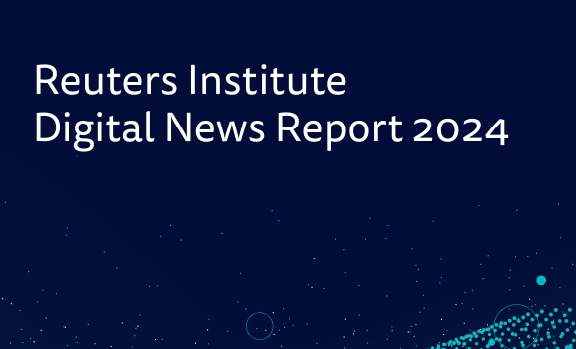Artificial intelligence (AI) is becoming more common in many industries, including journalism. A recent report titled “Digital News Report 2024” by the Reuters Institute for the Study of Journalism at Oxford University reveals that people around the world are increasingly skeptical about the use of AI in newsrooms. This report, which is the 13th edition, includes data from six continents and 47 markets and is especially relevant as many countries are having elections. Section 2.2 of the report looks closely at how consumers feel about utilizing AI in news creation, with detailed research from the UK, US, and Mexico.
Key Findings on Impact of utilizing AI by Media Houses
- Concerns About Fake News: The report shows that 59% of people are worried about distinguishing between real and fake news online, up 3% from last year. This concern is even higher in South Africa (81%) and the United States (72%).
- Trust Issues with Platforms: People find it hardest to trust news on platforms like TikTok and X (formerly Twitter), which have been known to spread misinformation, such as during the war in Gaza.
- Skepticism about AI in Journalism: There’s widespread suspicion about using AI for serious news topics like politics or war. However, people are more comfortable with AI handling behind-the-scenes tasks like transcription and translation, where it supports rather than replaces journalists.
- Social Media Platforms : Platforms have been adjusting strategies in the light of generative AI, and are also navigating changing consumer behaviour, as well as increased regulatory concerns about misinformation and other issues. Companies like Meta are changing their strategies due to generative AI and changing consumer behavior. Meta, in particular, is reducing the role of news on Facebook, Instagram, and Threads and cutting support for the news industry, not renewing deals worth millions of dollars, and removing its news tab in a number of countries
Other Findings
- Decline in Facebook News Use: Many countries are seeing a decrease in using Facebook for news, with more people turning to private messaging apps and video networks. Facebook news use is down 4% overall in the past year.
- Rise of YouTube and WhatsApp for News: YouTube is used for news by 31% of people weekly, WhatsApp by 21%, and TikTok (13%) has surpassed X (10%) for the first time.
- Video News Popularity: More people, especially younger groups, are watching short news videos online, with two-thirds accessing short videos and half watching longer formats. Most news videos are watched on online platforms rather than publisher websites.
- Stable Trust in News: Trust in news remains at 40%, the same as last year but lower than during the Coronavirus pandemic. Finland has the highest trust in news (69%), while Greece and Hungary have the lowest (23%).
- India’s Trust in News: In India, trust in news has slightly increased from 38% to 41% during this election year. Large, established media brands like the BBC and All India Radio are the most trusted. NDTV to be highly viewed online and offline news media platforms in India followed by Times of India in offline category and India.com in online category.
Conclusion
The report emphasizes the need for a careful approach to using AI in newsrooms. While AI can improve efficiency and news coverage, it is crucial to address public concerns. Transparency in AI processes, ethical guidelines, and human oversight are key to building trust and fully harnessing AI’s potential in journalism. As the media landscape evolves, a collaborative approach where AI supports human journalists can lead to a better-informed public.
References
- https://reutersinstitute.politics.ox.ac.uk/sites/default/files/2024-06/DNR%202024%20Final%20lo-res-compressed.pdf
- https://reutersinstitute.politics.ox.ac.uk/digital-news-report/2024/india
- https://ciso.economictimes.indiatimes.com/news/grc/global-audiences-suspicious-of-ai-powered-newsrooms-report-finds/111049738

